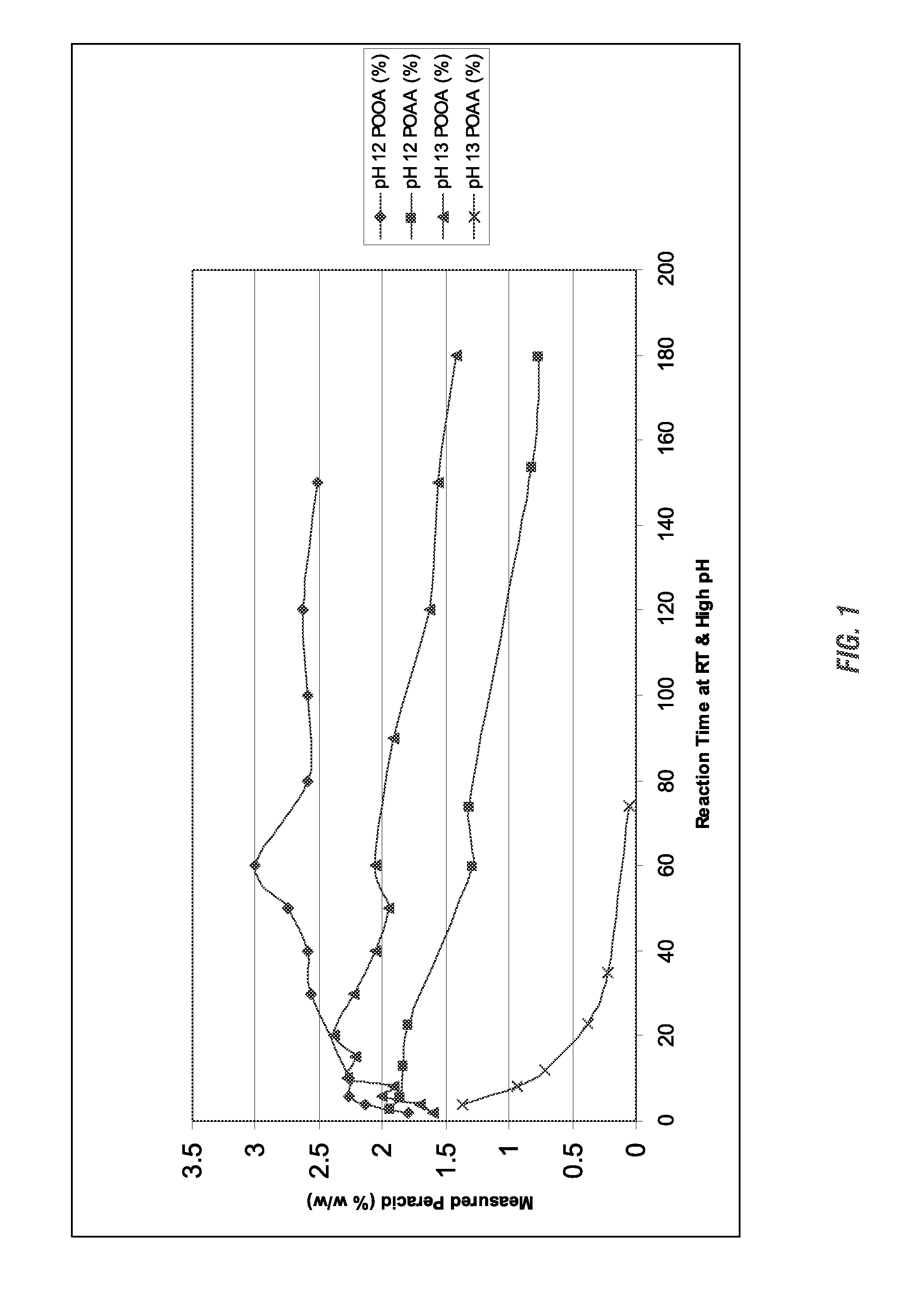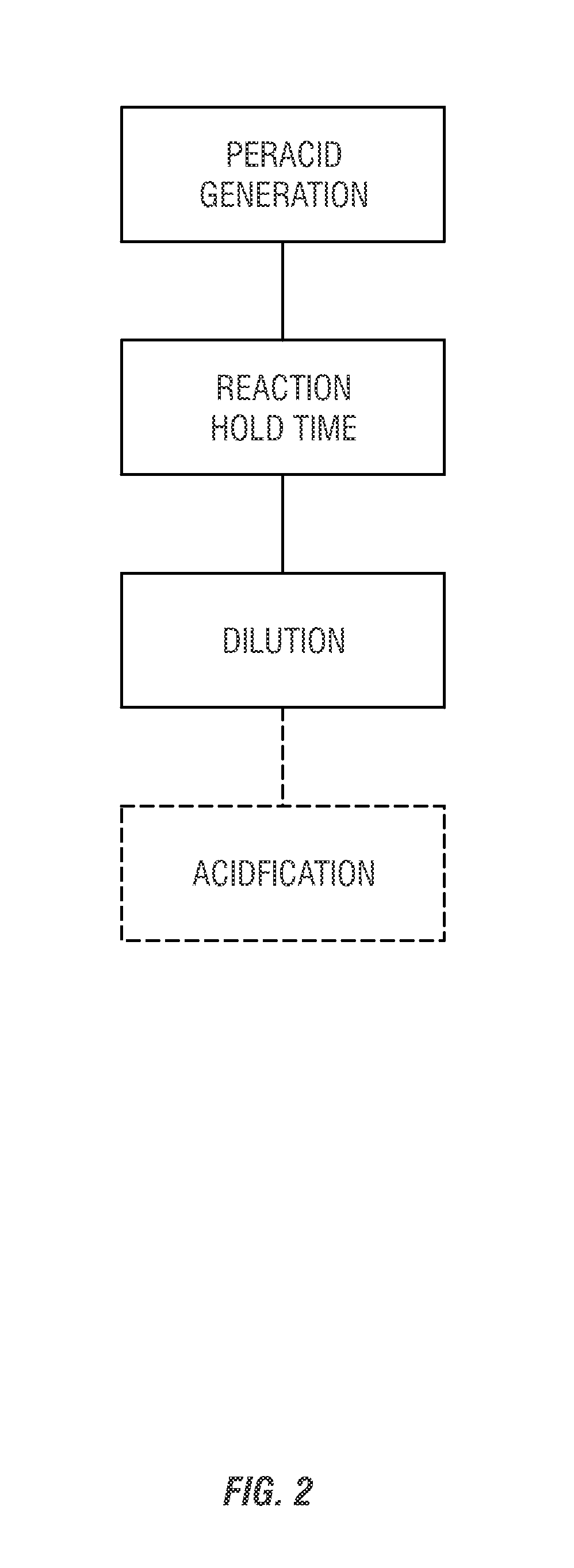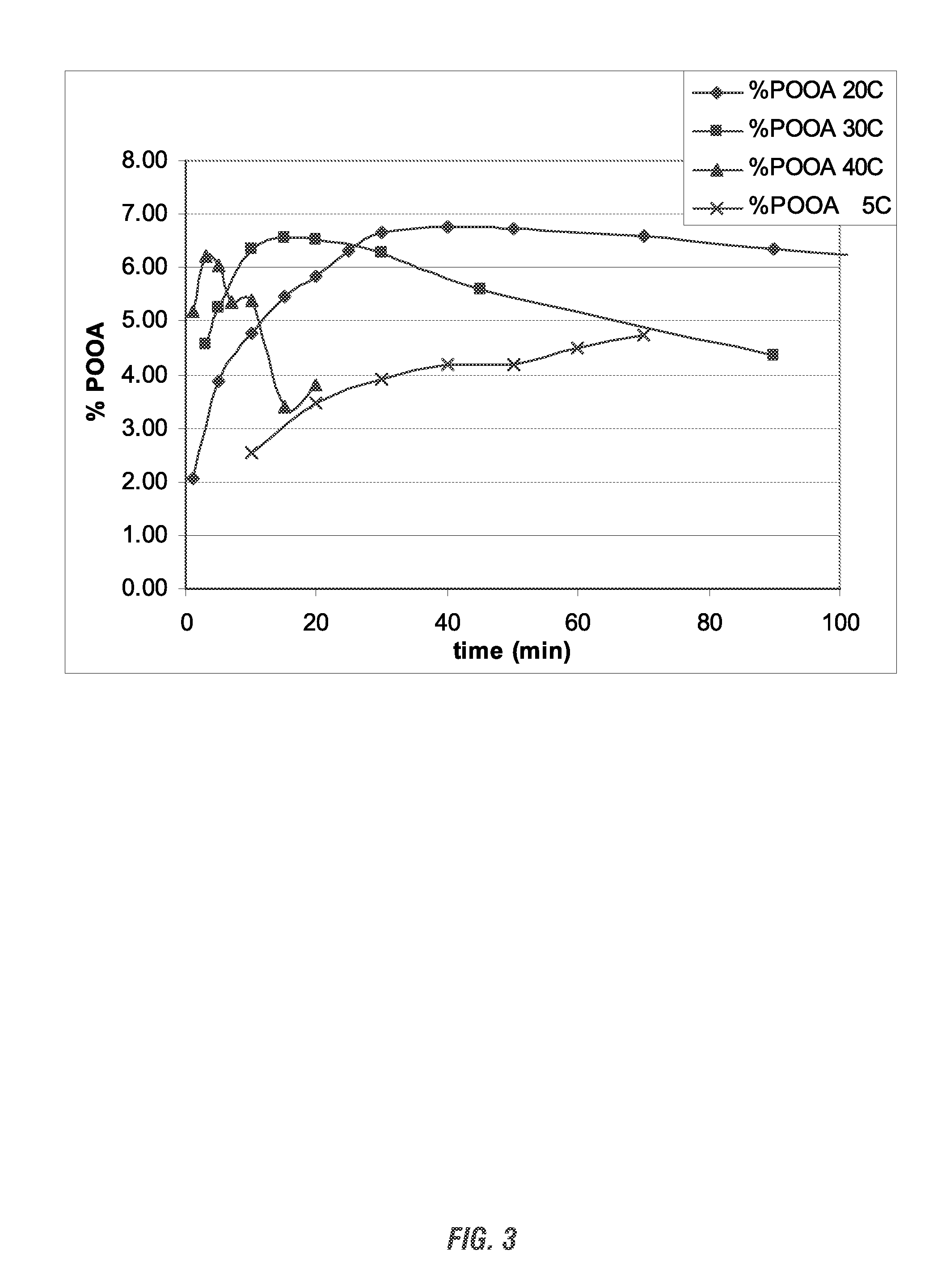IN SITU GENERATION OF PEROXYCARBOXYLIC ACIDS AT ALKALINE pH, AND METHODS OF USE THEREOF
a technology of peroxycarboxylic acid and alkaline pH, which is applied in the direction of disinfectants, biocide, antibacterial agents, etc., can solve the problems of peroxycarboxylic acid, relatively unstable solution, and decomposition of peroxycarboxylic acid
- Summary
- Abstract
- Description
- Claims
- Application Information
AI Technical Summary
Benefits of technology
Problems solved by technology
Method used
Image
Examples
example 1
[0183]A study was run to determine the ability to form peroxycarboxylic acids in situ from ester starting materials at alkaline pH levels. For this study, two different peroxycarboxylic acid forming compositions were each studied at two different pH levels. First, a peracetic acid (POAA) forming composition was tested at pH 12 and pH 13. For this test, 1.89 grams of hydrogen peroxide was mixed in a beaker with 0.62 grams of triacetin, 15 grams of distilled water, and 7.75 grams of a 10% solution of sodium hydroxide (NaOH). The beaker was fitted with a pH probe. After the sodium hydroxide was added the pH went up to about 12 immediately, and remained relatively stable while the sampling was performed. The peroxycarboxylic acid concentration was measured by removing a sample aliquot of the test solution, acidifying it with acetic acid, and titrating using an iodometric method. Both the peroxycarboxylic acid concentration and the hydrogen peroxide concentrations were measured over time...
example 2
[0186]A study was performed to evaluate the ability to generate a mixed peroxycarboxylic acid composition in situ from ester starting materials at alkaline pH. For this study, 1.28 grams of sorbitan octanoate, 14.68 grams of water, and 3.66 grams of a 35% hydrogen peroxide solution were added in a 100 mL beaker. With magnetic stirring, 14.64 grams of a 10% sodium hydroxide solution was added to the beaker. The solution was mixed for ten minutes. Then, 1.70 grams of triacetin was added to the solution. After mixing for an additional five minutes, the solution was sampled to measure the peroxyacetic (POAA) and peroxyoctanoic (POOA) acid concentrations.
[0187]This two-step addition process was also compared to a one step process. For the one step process, 1.26 grams of sorbitan octanoate, 1.70 grams of triacetin, 14.67 grams of water, and 3.66 grams of a 35% hydrogen peroxide solution were added in a 100 mL beaker. With magnetic stirring, 14.64 grams of a 10% sodium hydroxide solution w...
example 3
[0189]A study was run to evaluate the ability to form a solid peroxycarboxylic acid forming composition. For this study, 2.5 grams of sorbitan octanoate was mixed with 2.5 grams of sodium bicarbonate in a beaker. Light sodium bicarbonate (2.5 grams) was then added. With stirring, the composition solidified quickly. Then, 2.5 grams of sodium percarbonate, and 1.04 grams of sodium hydroxide were added. The solid mixture was pressed in a mold with a 1.5 inch diameter, at a pressure of 2000 psi. A solid tablet was formed in one minute.
[0190]The solid was then added to 25 grams of deionized (DI) water, and stirred for 15 minutes. The solution was then sampled and measured for POOA concentration. The iodometric titration showed 1.08% POOA present in the solution. Thus, it was shown that a solid peroxycarboxylic acid forming composition can be generated in situ using an ester starting material.
PUM
| Property | Measurement | Unit |
|---|---|---|
| Fraction | aaaaa | aaaaa |
| Fraction | aaaaa | aaaaa |
| Fraction | aaaaa | aaaaa |
Abstract
Description
Claims
Application Information
 Login to View More
Login to View More - R&D
- Intellectual Property
- Life Sciences
- Materials
- Tech Scout
- Unparalleled Data Quality
- Higher Quality Content
- 60% Fewer Hallucinations
Browse by: Latest US Patents, China's latest patents, Technical Efficacy Thesaurus, Application Domain, Technology Topic, Popular Technical Reports.
© 2025 PatSnap. All rights reserved.Legal|Privacy policy|Modern Slavery Act Transparency Statement|Sitemap|About US| Contact US: help@patsnap.com



